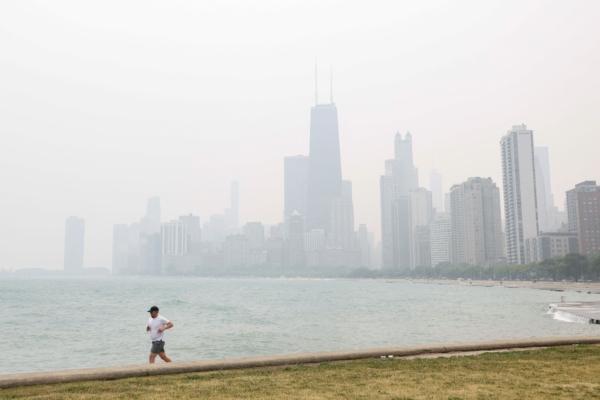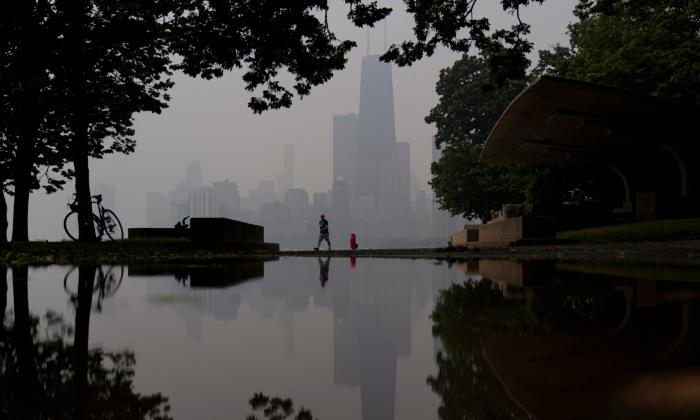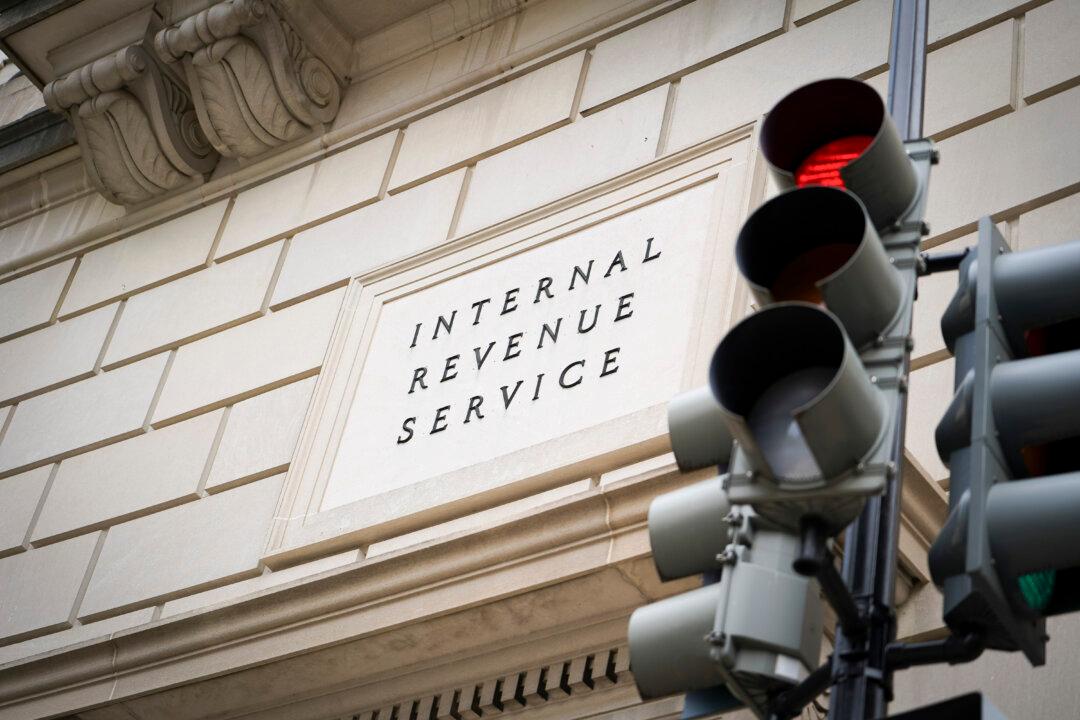Smoke from Canadian wildfires is blanketing cities in the United States, with air quality warnings in effect across the Midwest and toward the East Coast as hundreds of fires rage out of control north of the border.
The Detroit area woke up on June 28 to some of the worst air quality in the United States because of smoke from Canada’s 480 wildfires.
Three U.S. cities—Chicago, Detroit, and Minneapolis—were in the top five in terms of the worst air quality globally, per the tracker.

The National Weather Service stated that air quality alerts had been issued for the entire states of Iowa, Wisconsin, Illinois, Indiana, Michigan, Delaware, and Maryland.
At the same time, parts of Kansas, Missouri, Minnesota, Ohio, Pennsylvania, New York, Virginia, and North Carolina had been put on alert because of poor air quality.
“Another round is going through western New York, western Pennsylvania later today,” National Weather Service meteorologist Byran Jackson said on June 28. “And then that continues over the northern Mid-Atlantic. It will persist there into Thursday.
“There’s particularly poor air quality ... over southern Wisconsin, Illinois, central Indiana, and also another area over southeast Michigan, Detroit, and northeast Ohio around Cleveland. This is particularly thick smoke.”

Minnesota issued a record 23rd air quality alert for the year through the night of June 28, as smoky skies obscured the skylines of Minneapolis and St. Paul.
Record-Breaking Burn
Across Canada, 480 fires are burning, with 239 of them considered to be out of control, according to the Canadian Interagency Forest Fire Centre (CIFFC).The wildfire intensity is so high this season that it took just six months to break a record that was set an entire year decades ago.
The CIFFC stated on June 26 that 29,393 square miles of land, including forests, has burned across Canada so far this year, breaking the previous record, set in 1989, of 29,187 square miles.
Canada’s federal Emergency Preparedness Minister Bill Blair said last week that he wasn’t “looking to break any records” but acknowledged that it was probably inevitable.
Plumes of smoke from the wildfires have cast a dark pall over affected areas, including the greater Toronto area, Hamilton, Windsor, Barrie, London in Ontario, and most of northern Quebec.
Earlier this month, massive fires burning stretches of Canadian forests blanketed the northeastern United States and the Great Lakes region with smoke, turning the air yellowish gray and prompting warnings for people to stay inside and keep windows closed.
The small particles in wildfire smoke can irritate the eyes, nose, and throat and can affect the heart and lungs, making it harder to breathe. Health officials say it’s important to limit outdoor activities as much as possible to avoid breathing in the particles.
CBO Releases Wildfire Analysis
The nonpartisan Congressional Budget Office (CBO) recently issued an analysis of wildfire activity in the United States, highlighting concerning trends and far-reaching effects on the environment, public health, and the economy.The findings shed light on the increasing scale of wildfires, the substantial financial costs involved, and the urgent need for effective forest management strategies.
Between the years 2017 and 2021, an average of 8 million acres each year succumbed to wildfires. This figure represents more than double the average amount recorded between 1987 and 1991, signaling an escalation in the frequency and severity of these disasters. Fires on federal lands were found to be five times larger, on average, than those on nonfederal lands.
The financial toll of fire suppression has been significant, the CBO analysis shows. From 2016 to 2020, the average annual spending by the federal government on fire suppression alone amounted to $2.5 billion. This figure doesn’t include other federal fire-related expenses, such as disaster assistance, which totaled $5 billion for declared disasters during the same period.
Indirect costs, such as health care expenses resulting from smoke exposure and potential revenue losses from federal timber sales, add to the economic burden of wildfires. Wildfires also have a negative effect on watersheds, further straining ecosystems and natural resources.
The CBO analysis recommends proactive forest management to help mitigate the risk and severity of wildfires, including implementing prescribed fires, managing wildfires in remote areas, and mechanically thinning forests to reduce vegetation density and fuel load.
However, the costs associated with implementing these approaches vary depending on the landscape and the specific treatment required.





